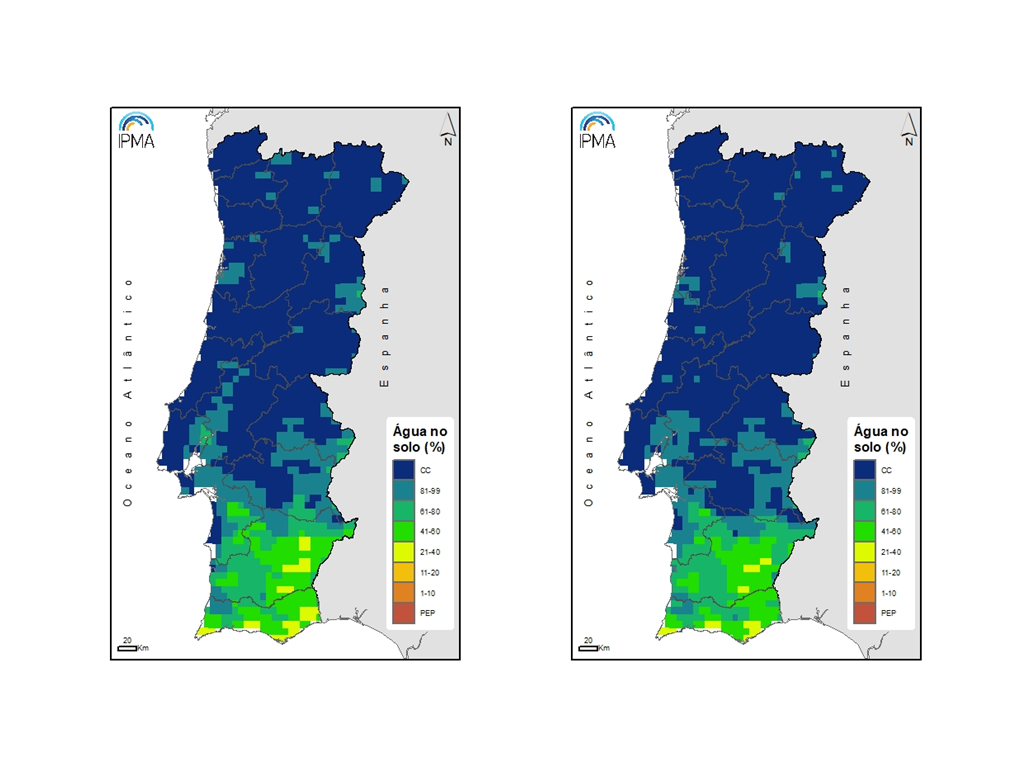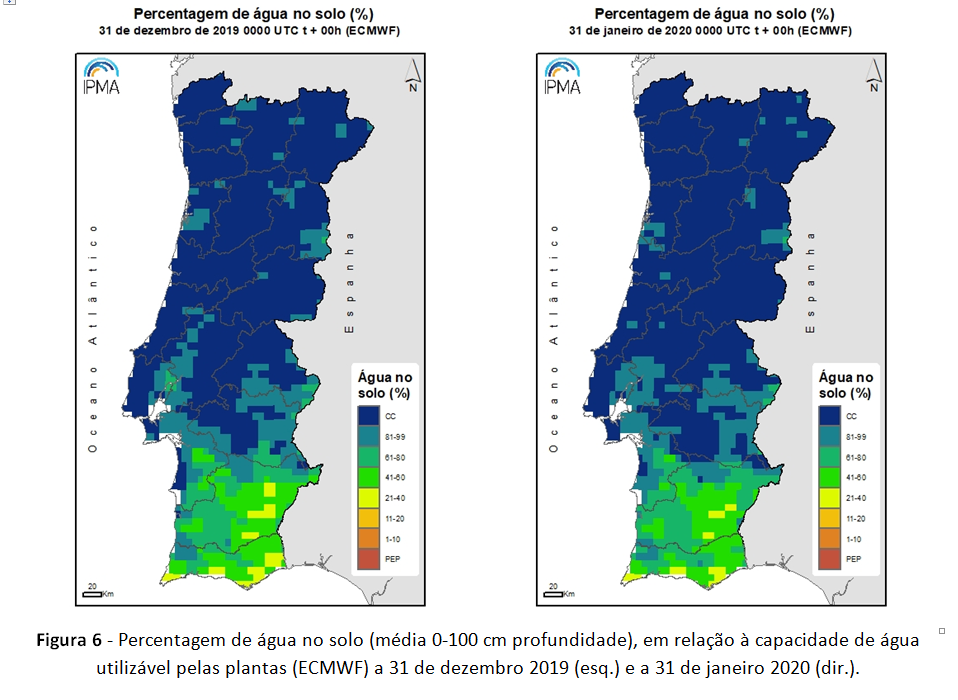January climate summary

January 2020, in mainland Portugal, was classified as hot and dry (Figure 1).
The average value of the average air temperature, 9.58 ° C, was higher than the normal value by 0.77 ° C (Figure 2). Higher average temperature values, than those now recorded, have occurred in 25% of the years since 1931.
The average value of the maximum air temperature was 13.91 ° C, 0.82 ° C higher than the normal value, being the 14th highest value since 1931 (highest in 2008), Figure 3. It should be noted that the values of maximum air temperature in January they were always higher than normal for the last 9 years (since 2012), this being the biggest consecutive period with positive anomalies since 1931, for the month of January.
The average value of the minimum air temperature, 5.26 ° C, was 0.72 ° C higher than normal. Minimum air temperature values higher than those currently recorded have occurred in 30% of the years, since 1931.
During the month there was a great variability in the air temperature values (minimum, average and maximum), with emphasis on (Figure 4):
- maximum air temperature for periods 14 to 19 and 25 to 31, with daily average values above the normal value of the month;
- minimum air temperature until the 13th, the daily average values were almost always lower than the normal value (except for days 3 and 9) and from the 14th day onwards they were almost always higher than normal, with periods from 15 to 18 noteworthy and 28 to 31 with deviation above + 4 ° C.
The average value of the amount of precipitation in January, 76.0 mm, corresponds to about 65% of the normal value 1971-2000 (Figure 5).
In terms of spatial distribution, only on the North coast were values above the normal monthly value; in the remaining regions it was lower, particularly in Alentejo and the Algarve.
At the end of January, the percentage of water in the soil (Figure 6) remains the same as the field capacity in the North and Center regions. In the South region there was a slight increase, however there are still some places in Baixo Alentejo and Algarve still with values below 40%.
According to the PDSI index, at the end of January (Figure 7), the situation of meteorological drought in the regions south of the Tagus remains, with emphasis on the regions of Baixo Alentejo and Algarve in the classes of moderate and severe drought.
The percentage distribution by classes of the PDSI index in the territory is as follows: 1.3% severe rain, 26.0% moderate rain, 19.4% light rain, 12.4% normal, 23.1% weak drought, 11.7% moderate drought and 6.1% severe drought.
Imagens associadas


